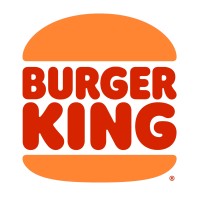
Taco Bell Company Cyber Security Posture
tacobell.comTaco Bell was born and raised in California and has been around since 1962. We went from selling everyone’s favorite Crunchy Tacos on the West Coast to a global brand with 8,200+ restaurants, 350 franchise organizations, that serve 42+ million fans each week around the globe. We’re not only the largest Mexican-inspired quick service brand (QSR) in the world, we’re also part of the biggest restaurant group in the world: Yum! Brands. Much of our fan love and authentic connection with our communities are rooted in being rebels with a cause. From ensuring we use high quality, sustainable ingredients to elevating restaurant technology in ways that hasn’t been done before… we will continue to be inclusive, bold, challenge the status quo and push industry boundaries. We’re a company that celebrates and advocates for different, has bold self-expression, strives for a better future, and brings the fun while we’re at it. We fuel our culture with real people who bring unique experiences. We inspire and enable our teams and the world to Live Más. At Taco Bell, we’re Cultural Rebels.
Taco Bell Company Details
taco-bell
72817 employees
240980.0
722
Restaurants
tacobell.com
Scan still pending
TAC_2334436
In-progress
Between 900 and 1000
This score is AI-generated and less favored by cyber insurers, who prefer the TPRM score.
 Taco Bell Global Score
Taco Bell Global Score.png)

Taco Bell Company Scoring based on AI Models
| Model Name | Date | Description | Current Score Difference | Score |
|---|---|---|---|---|
| AVERAGE-Industry | 03-12-2025 | This score represents the average cybersecurity rating of companies already scanned within the same industry. It provides a benchmark to compare an individual company's security posture against its industry peers. | N/A | Between 900 and 1000 |
Taco Bell Company Cyber Security News & History
| Entity | Type | Severity | Impact | Seen | Url ID | Details | View |
|---|---|---|---|---|---|---|---|
| Yum! Brands | Breach | 60 | 3 | 04/2023 | YUM33429523 | Link | |
Rankiteo Explanation : Attack with significant impact with internal employee data leaksDescription: Yum! Approximately 300 restaurants in the UK were closed for one day as a result of a cyberattack that Brands had to endure that required the company to shut down its systems. The exposed information includes names, driver’s license numbers, non-driver Identification Card Number, and other types of personal identifiers. The company investigated the security breach with the help of third-party cybersecurity experts, to identify the scope of the incident. They investigated the incident and also provided complimentary credit monitoring and identity protection services for two years via IDX. | |||||||
Taco Bell Company Subsidiaries

Taco Bell was born and raised in California and has been around since 1962. We went from selling everyone’s favorite Crunchy Tacos on the West Coast to a global brand with 8,200+ restaurants, 350 franchise organizations, that serve 42+ million fans each week around the globe. We’re not only the largest Mexican-inspired quick service brand (QSR) in the world, we’re also part of the biggest restaurant group in the world: Yum! Brands. Much of our fan love and authentic connection with our communities are rooted in being rebels with a cause. From ensuring we use high quality, sustainable ingredients to elevating restaurant technology in ways that hasn’t been done before… we will continue to be inclusive, bold, challenge the status quo and push industry boundaries. We’re a company that celebrates and advocates for different, has bold self-expression, strives for a better future, and brings the fun while we’re at it. We fuel our culture with real people who bring unique experiences. We inspire and enable our teams and the world to Live Más. At Taco Bell, we’re Cultural Rebels.
Access Data Using Our API

Get company history
.png)
Taco Bell Cyber Security News
Taco Bell Reports “Staggering” Sales Growth
Irvine-based fast-food chain is driving growth for owner Yum Brands as it defies overall industry slump.
Bridging the Gap: Integrating Legal and Insurance Considerations into Restaurant Cybersecurity Response
This article explores how restaurants can better prepare for cyber incidents, understand third-party vendor risks, respond effectively when breaches occur.
KFC, Taco Bell parent company expands AI efforts amid broader transformation
Yum Brands, which owns KFC and Pizza Hut, is working to integrate and scale reinforcement learning, an ML approach that trains models to respond ...
People Moves: Katie Arrington
Big industry moves include execs taking on roles at SAP, Snowflake, the US Department of Defense & Yum! Brands, home to brands including KFC ...
Yum Brands faces class action suits from employees after ransomware attack
The Taco Bell and KFC operator is facing litigation after some personal data of company employees was stolen in the attack.
Personal data of fast food workers stolen in Yum! Brands ransomware attack
The personal information of individuals was stolen during the mid-January ransomware attack that forced nearly 300 restaurants to close down.
Taco Bell Adding AI Voice Ordering to Hundreds of Drive-Thrus
Taco Bell is planning to add AI voice technology to hundreds of its drive-thrus by year's end, according to parent company Yum! Brands.
Taco Bell, KFC owner says data stolen during ransomware attack
Yum Brands, the parent company of fast-food chains KFC, Pizza Hut and Taco Bell, has confirmed that company data was stolen in a ransomware ...
Yum! Brands, the owner of KFC, Taco Bell and Pizza Hut, discloses data breach
Now the company, which owns the KFC, Pizza Hut, and Taco Bell brands, disclosed a data breach and revealed that ransomware actors have stolen ...

Taco Bell Similar Companies

Olive Garden
Founded in 1982, Olive Garden is owned by Darden Restaurants, Inc. (NYSE:DRI), the world's largest company-owned and operated full-service restaurant company. With more than 800 restaurants, more than 92,000 employees and more than $3.5 billion in annual sales, Olive Garden is the leading restaurant

P.F. Chang's
P.F. Chang’s is a restaurant concept that honors the 2,000-year-old Asian tradition of wok cooking and believes in making food from scratch every day in every restaurant. Since inception, P.F. Chang’s chefs hand-roll dim sum, hand chop and slice all vegetables and meats, handcraft every sauce and w

Whataburger
Over six decades ago, an adventurous and determined entrepreneur named Harmon Dobson had a bold idea: to serve a burger so big that it took two hands to hold, and so good that after a single bite customers couldn't help but exclaim, “What a burger!” He named his humble burger stand, located on Ayers

KFC US
KFC Corporation, based in Louisville, Kentucky, is one of the few brands in America that can boast about having a rich, 60-year history of success and innovation. In fact, KFC is the world's most popular chicken restaurant chain and a division of Yum! Brands, the world’s largest restaurant company.

Burger King
The year is 1954. Dave and Jim*, two budding entrepreneurs, are on a mission to re-design the perfect broiler, one that will infuse flame-grilled goodness into every burger. And that's how our brand was born. Today the Burger King Corporation, its affiliates and its franchisees collectively operat

Bloomin' Brands, Inc.
Since the first Outback Steakhouse opened, our family of brands has expanded to include Carrabba's Italian Grill, Bonefish Grill, and Fleming's Prime Steakhouse & Wine Bar. Together, these unique, Founder-inspired restaurants make up Bloomin' Brands, Inc. Today, we are one of the world's largest cas

Frequently Asked Questions
Explore insights on cybersecurity incidents, risk posture, and Rankiteo's assessments.
Taco Bell CyberSecurity History Information
How many cyber incidents has Taco Bell faced?
Total Incidents: According to Rankiteo, Taco Bell has faced 1 incident in the past.
What types of cybersecurity incidents have occurred at Taco Bell?
Incident Types: The types of cybersecurity incidents that have occurred incident Breach.
How does Taco Bell detect and respond to cybersecurity incidents?
Detection and Response: The company detects and responds to cybersecurity incidents through third party assistance with Third-party cybersecurity experts and remediation measures with Complimentary credit monitoring and identity protection services for two years via IDX.
Incident Details
Can you provide details on each incident?

Incident : Cyberattack
Title: Cyberattack on Yum! Brands
Description: Approximately 300 restaurants in the UK were closed for one day as a result of a cyberattack that Yum! Brands had to endure, requiring the company to shut down its systems.
Type: Cyberattack
What are the most common types of attacks the company has faced?
Common Attack Types: The most common types of attacks the company has faced is Breach.
Impact of the Incidents
What was the impact of each incident?

Incident : Cyberattack YUM33429523
Data Compromised: names, driver’s license numbers, non-driver Identification Card Number, other types of personal identifiers
Downtime: One day
Operational Impact: 300 restaurants closed
Identity Theft Risk: High
What types of data are most commonly compromised in incidents?
Commonly Compromised Data Types: The types of data most commonly compromised in incidents are names, driver’s license numbers, non-driver Identification Card Number and other types of personal identifiers.
Which entities were affected by each incident?
Response to the Incidents
What measures were taken in response to each incident?

Incident : Cyberattack YUM33429523
Third Party Assistance: Third-party cybersecurity experts
Remediation Measures: Complimentary credit monitoring and identity protection services for two years via IDX
How does the company involve third-party assistance in incident response?
Third-Party Assistance: The company involves third-party assistance in incident response through Third-party cybersecurity experts.
Data Breach Information
What type of data was compromised in each breach?

Incident : Cyberattack YUM33429523
Type of Data Compromised: names, driver’s license numbers, non-driver Identification Card Number, other types of personal identifiers
Sensitivity of Data: High
Personally Identifiable Information: True
What measures does the company take to prevent data exfiltration?
Prevention of Data Exfiltration: The company takes the following measures to prevent data exfiltration: Complimentary credit monitoring and identity protection services for two years via IDX.
Investigation Status
What is the current status of the investigation for each incident?

Incident : Cyberattack YUM33429523
Investigation Status: Investigation completed
Post-Incident Analysis
What is the company's process for conducting post-incident analysis?
Post-Incident Analysis Process: The company's process for conducting post-incident analysis is described as Third-party cybersecurity experts.
Additional Questions
Impact of the Incidents
What was the most significant data compromised in an incident?
Most Significant Data Compromised: The most significant data compromised in an incident were names, driver’s license numbers, non-driver Identification Card Number and other types of personal identifiers.
Response to the Incidents
What third-party assistance was involved in the most recent incident?
Third-Party Assistance in Most Recent Incident: The third-party assistance involved in the most recent incident was Third-party cybersecurity experts.
Data Breach Information
What was the most sensitive data compromised in a breach?
Most Sensitive Data Compromised: The most sensitive data compromised in a breach were names, driver’s license numbers, non-driver Identification Card Number and other types of personal identifiers.
Investigation Status
What is the current status of the most recent investigation?
Current Status of Most Recent Investigation: The current status of the most recent investigation is Investigation completed.
What Do We Measure?
















Every week, Rankiteo analyzes billions of signals to give organizations a sharper, faster view of emerging risks. With deeper, more actionable intelligence at their fingertips, security teams can outpace threat actors, respond instantly to Zero-Day attacks, and dramatically shrink their risk exposure window.
These are some of the factors we use to calculate the overall score:
Identify exposed access points, detect misconfigured SSL certificates, and uncover vulnerabilities across the network infrastructure.
Gain visibility into the software components used within an organization to detect vulnerabilities, manage risk, and ensure supply chain security.
Monitor and manage all IT assets and their configurations to ensure accurate, real-time visibility across the company's technology environment.
Leverage real-time insights on active threats, malware campaigns, and emerging vulnerabilities to proactively defend against evolving cyberattacks.




